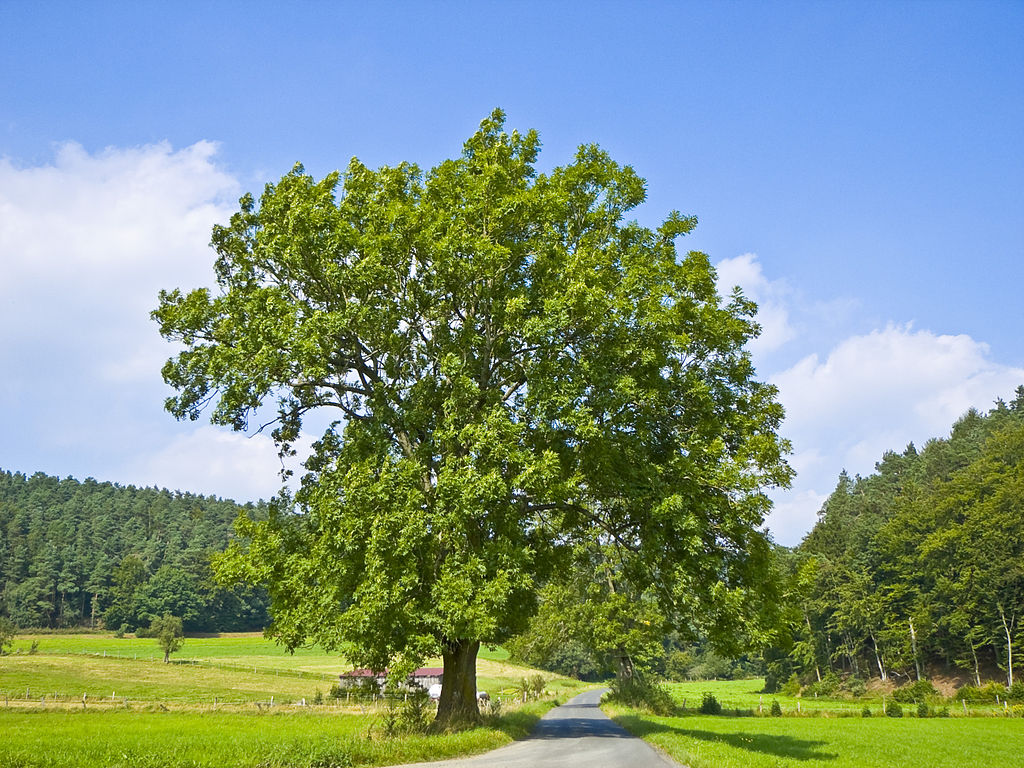- Ash trees, the second most abundant trees in Europe, are quickly being pushed towards extinction by the invasive emerald ash borer beetle and the fungus causing ash dieback.
- In Britain, ash dieback could result in up to 95 percent mortality, study notes.
- The emerald ash borer beetle is yet to reach U.K., but it is rapidly spreading westwards across Europe. The beetle could be potentially as devastating as ash dieback, if not more, researcher says.
Ash trees (Fraxinus excelsior) are the second most abundant trees in Europe. But these commonly-found trees could soon become extinct, a new study warns.
Threats from an invasive and “potentially devastating” emerald ash borer beetle (Agrilus planipennis), and the ash-dieback fungus could wipe out Europe’s Ash trees, according to the review study published in the Journal of Ecology.
“Between the fungal disease ash dieback and a bright green beetle called the emerald ash borer, it is likely that almost all ash trees in Europe will be wiped out – just as the elm was largely eliminated by Dutch elm disease,” author of the paper, Peter Thomas of Keele University, said in a statement.
Ash dieback-causing fungus (Hymenoscyphus fraxineus) was first seen in eastern Europe in 1992, possibly introduced via an infected ash tree imported from the Russian far east, experts say. In Britain, the disease was first spotted in 2012.
Ash dieback has already had a serious effect on ash stands throughout mainland Europe, Thomas writes in the review paper. Currently, it covers 2 million square kilometers (~772,000 square miles) from Scandinavia down to France and Italy.
The fungus infects an Ash tree through its leaves. Then it invades the phloem, xylem and pith of the tree, rapidly spreading through the tree in all directions, eventually killing the tree.
Thomas writes that in the worst-case scenario, ash dieback in Britain could result in up to 95 percent mortality. “As yet, we have no real idea whether such high mortality rates will be reached, but they are by no means improbable,” he adds.

The emerald ash borer could potentially be as devastating as ash dieback, if not more, Thomas notes.
A native to eastern Asia, the green jewel beetle has already killed hundreds of millions of ash trees in North America since its discovery in 2002. Now, its rapidly moving into Europe.
It was first recorded in Moscow in 2003. According to a 2014 study, the beetle has killed or greatly damaged most ash trees in Russia’s capital and its surroundings. From Moscow, the beetle has been spreading westwards across Europe, researchers say. It is yet to reach U.K., though.
So what does the disappearance of ash trees mean for Europe’s biodiversity?
Thomas writes that the death of ash trees will cause “large-scale changes to many communities and many associated organisms will also decline”. More than 1,000 species of organisms, including mammals, birds, plants, invertebrates and lichens, are associated with ash trees, he writes. Many of these are threatened or endangered. Some species are also obligates or heavily dependent on ashes. These are “most likely to decline in number and potentially become locally extinct,” Thomas adds.
“Some other trees, such as alder, small-leaved lime and rowan, can provide homes for some of these species but they would look different in the landscape,” Thomas said in the statement. “If the ash went, the British countryside would never look the same again.”
Citation:
- Peter A Thomas (2016). ‘Biological Flora of the British Isles: Fraxinus excelsior’Journal of Ecology. Doi: 10.1111.1365-2745.12566.














